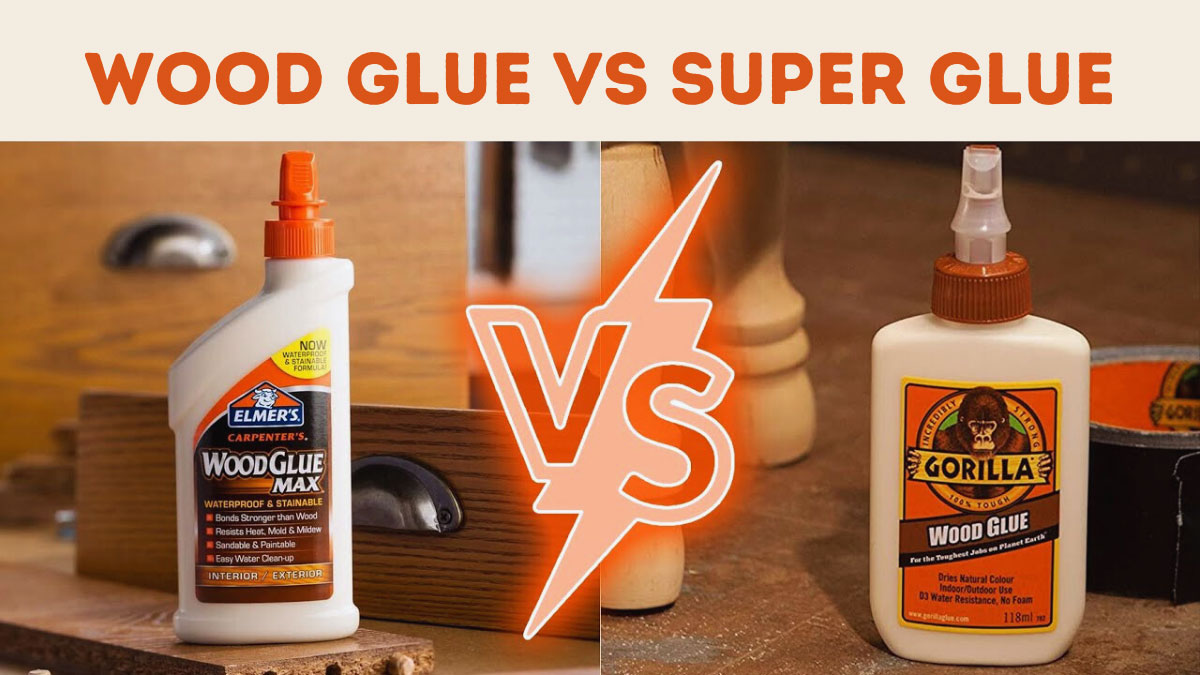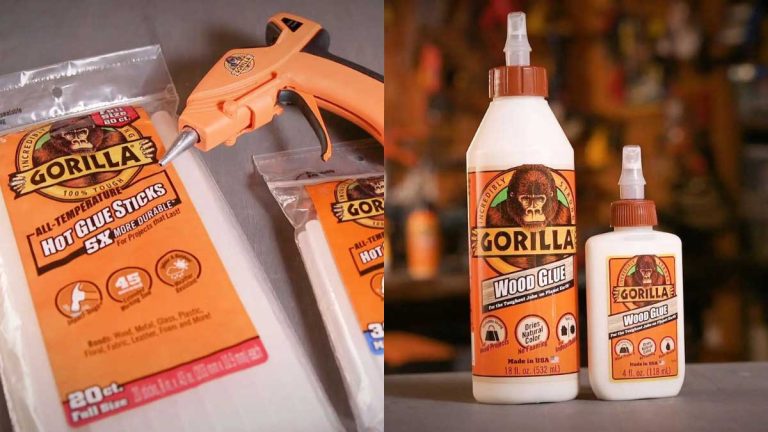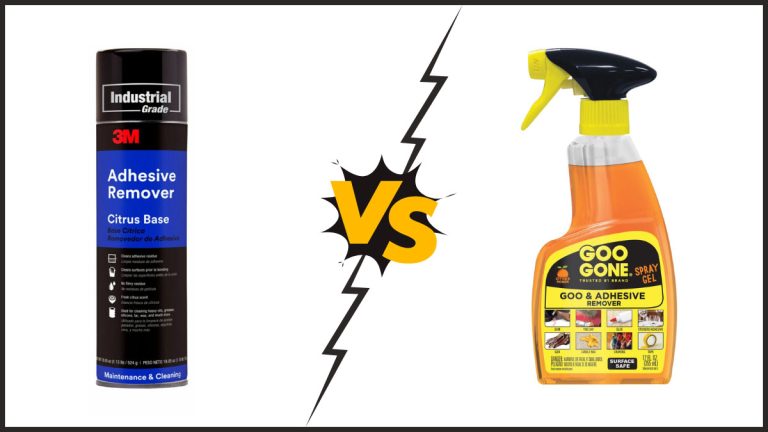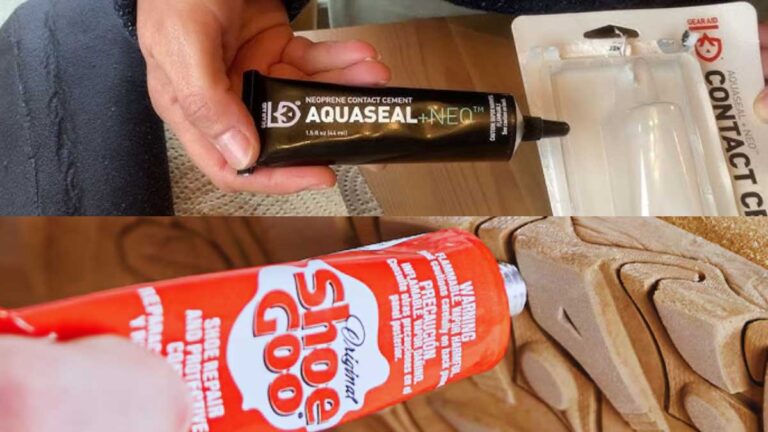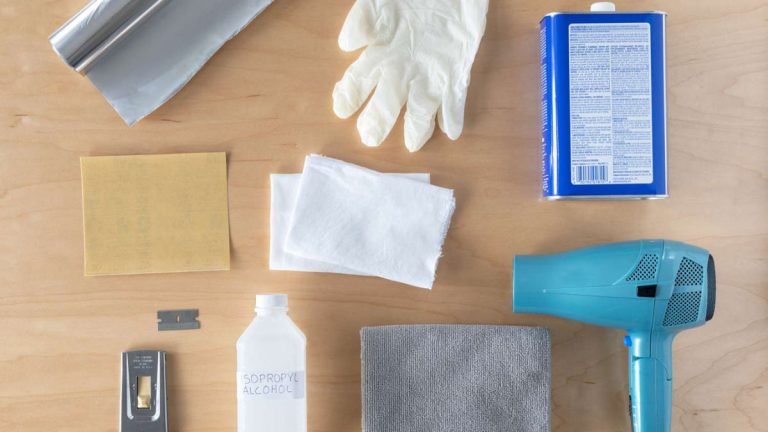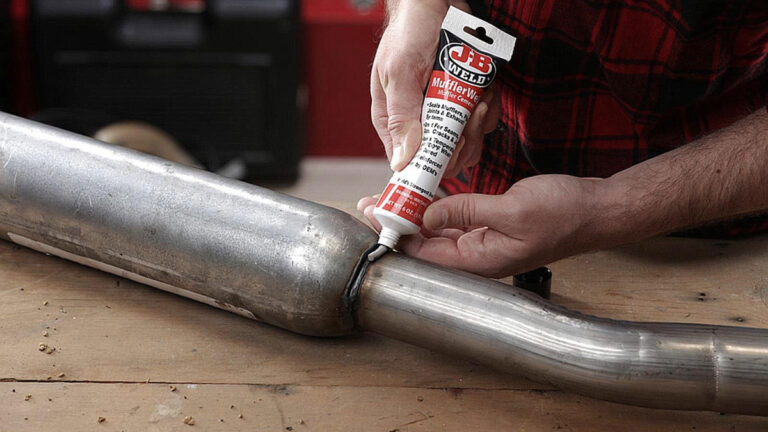Wood Glue vs Super Glue: Choosing the Best Adhesive for DIY Projects
Choosing the right adhesive can make or break your DIY project. When it comes to bonding materials, particularly wood, you might find yourself debating between wood glue and super glue. Both have their strengths, but understanding their differences is key to achieving the best results.
Wood glue, often favored in carpentry, offers a strong, durable bond specifically designed for wood fibers. On the other hand, super glue, known for its quick-drying and versatile nature, can bond a variety of materials almost instantly. So which one should you reach for when you’re in the middle of your next project? Let’s jump into the specifics to help you make an well-informed choice.
Key Takeaways
- Wood glue provides a strong, flexible bond ideal for woodworking and porous materials, while requiring longer drying time and clamping.
- Super glue offers a fast-drying, rigid bond suitable for non-porous surfaces like metal and glass, making it perfect for quick fixes but less suitable for flexible or stress-bearing applications.
- Types of wood glue include PVA, polyurethane, and epoxy, each tailored for specific woodworking needs like interior projects, outdoor conditions, or high-stress joints.
- Types of super glue include standard, gel, and flexible variants, catering to different bonding requirements, including vertical surfaces and materials needing flexibility.
- Understanding the unique characteristics, strengths, and weaknesses of wood glue and super glue can help you choose the right adhesive for your DIY and repair projects.
Understanding Wood Glue
Choosing the right adhesive for your wood projects is crucial. Wood glue offers unique properties tailored to bonding wood, making it an indispensable tool for many DIY tasks.
Characteristics and Uses
- Composition:
- Wood glue typically consists of polyvinyl acetate (PVA) dissolved in water.
- Properties:
- Creates a strong, long-lasting bond on porous materials like wood.
- Slower drying time lets it soak into wood fibers.
- Remains flexible after drying, flexing with wood to prevent cracks.
- Uses:
- Ideal for wood joints, furniture repair, and wood-related DIY projects.
- Available in interior, exterior, and waterproof varieties.
Types of Wood Glue
- PVA Glue:
- Composition: Polyvinyl acetate in water.
- Characteristics: Strong, flexible bond; typically yellow or white.
- Uses: General woodworking, interior applications.
- Polyurethane Glue:
- Composition: Polyurethane polymers.
- Characteristics: Waterproof, expands to fill gaps.
- Uses: Outdoor projects, difficult bonds.
- Epoxy Glue:
- Composition: Resin and hardener components.
- Characteristics: Extremely strong, gap-filling properties.
- Uses: High-stress joints, furniture repairs, mixed materials.
| Type | Composition | Characteristics | Uses |
|---|---|---|---|
| PVA Glue | Polyvinyl acetate in water | Flexible bond, yellow or white | General woodworking |
| Polyurethane Glue | Polyurethane polymers | Waterproof, gap-filling | Outdoor projects |
| Epoxy Glue | Resin and hardener | Extremely strong, gap-filling | High-stress joints |
By understanding the characteristics and uses of different types of wood glue, you can better choose the right adhesive for your specific project needs. Consider these factors to ensure a long-lasting bond and successful outcome for your DIY endeavors.
Understanding Super Glue
Super glue, also known as cyanoacrylate adhesive, is a fast-acting, strong adhesive suitable for a variety of materials. Ideal for quick repairs, its versatility makes it a staple in many toolkits.
Characteristics and Uses
- Composition and Action:
Super glue comprises cyanoacrylate, a quick-setting compound reacting with moisture to form a rigid bond. It cures rapidly, often within seconds, eliminating the need for clamping. - Suitability:
This adhesive is ideal for non-porous surfaces such as metal, glass, ceramics, and certain plastics. It’s widely used for small repairs, model building, and in situations requiring immediate bonding. - Strength and Resistance:
Once set, super glue forms a strong, rigid bond resistant to water and most chemicals. But, it is brittle and unsuitable for applications involving stress or movement.
Types of Super Glue
- Standard Super Glue:
Works well for general-purpose bonding tasks on non-porous surfaces. Typically used in home repairs and crafting. - Gel Super Glue:
Thicker consistency prevents drips and runs. Ideal for vertical surfaces and porous materials where gap filling is essential. - Flexible Super Glue:
Contains added rubber for flexibility. Suitable for materials like leather and various plastics where a flexible bond is needed. - Specialized Super Glue:
Tailored variants are available, such as those designed for bonding specific materials like rubber, plastic, or metal.
| Feature | Wood Glue | Super Glue |
|---|---|---|
| Composition | Polyvinyl acetate (PVA) | Cyanoacrylate |
| Drying Time | Several hours, requires clamping | Seconds to minutes, no clamping needed |
| Flexibility | Flexible post-drying | Rigid and brittle once set |
| Best For | Porous materials like wood | Non-porous surfaces like metal, glass, plastic |
| Water Resistance | Varies (interior, exterior, waterproof) | High, resistant after curing |
Understanding these differences helps you choose the right adhesive for your project. Each glue has unique strengths, suited to specific tasks and materials.
Comparing Wood Glue and Super Glue
Choosing between wood glue and super glue depends on several factors, including strength, durability, drying time, setting, material compatibility, and aesthetics. Understanding these differences helps you make an well-informed choice for your DIY projects.
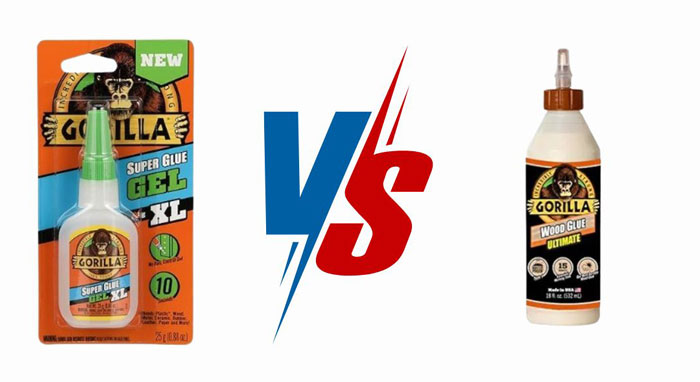
Strength and Durability
- Wood Glue:
- Composition: Typically made from polyvinyl acetate (PVA).
- Strength: Forms a bond stronger than the wood itself, preventing stress risers.
- Flexibility: Allows wood to flex without cracking the bond.
- Durability: Generally weaker than super glue but highly suitable for wood applications.
- Super Glue:
- Composition: Made from cyanoacrylate.
- Strength: Forms a very strong bond.
- Brittleness: Brittle nature can lead to cracks under stress or movement.
- Durability: Highly resistant to temperature and moisture.
Drying Time and Setting
- Wood Glue:
- Drying Time: Takes 12 to 24 hours to fully set.
- Clamping: Often requires clamping to ensure a strong bond.
- Workability: Slower drying allows more adjustment time.
- Super Glue:
- Drying Time: Dries almost instantly within minutes.
- Quick Fixes: Ideal for quick repairs.
- Ease of Use: Sets quickly, providing less adjustment time.
Material Compatibility
- Wood Glue:
- Wood: Best for bonding wood due to its ability to soak into wood fibers.
- Porous Materials: Works well with other porous materials.
- Applications: General woodworking, outdoor projects (polyurethane glue), high-stress joints (epoxy glue).
- Super Glue:
- Non-Porous Surfaces: Ideal for metal, glass, ceramics, and some plastics.
- Versatile Use: Suitable for a variety of materials beyond wood.
- Applications: Quick repairs on non-porous surfaces, vertical surfaces (gel super glue), materials needing flexible bonds.
Aesthetic Considerations
- Wood Glue:
- Clear Finish: Dries to a clear or light yellow finish, which can be sanded and painted.
- Seamless Joints: Provides a more natural look, ideal for wood projects where aesthetics matter.
- Versatility: Accepts stains and finishes well, blending with the wood.
- Super Glue:
- Clear but Brittle: Dries clear but may leave a shiny, brittle finish.
- Minimal Sanding: Less suitable for applications where joints need to be sanded or painted.
- Noticeable Repairs: Can leave visible repair lines, not ideal for aesthetically sensitive projects.
| Feature/Property | Wood Glue | Super Glue |
|---|---|---|
| Strength | Strong, flexible for wood | Very strong, brittle |
| Drying Time | 12 to 24 hours | Within minutes |
| Material Match | Best for wood and porous materials | Suitable for various non-porous surfaces |
| Durability | Durable under stress and movement | Highly resistant to temperature and moisture |
| Aesthetic Finish | Clear/light yellow, blendable | Clear but shiny and brittle |
By considering these factors, you can determine which adhesive best suits your project’s demands.
Applications and Use Cases
Woodworking and Carpentry
Wood glue, crafted specifically for bonding wood, excels in woodworking and carpentry. This adhesive, made from polyvinyl acetate (PVA), forms strong, long-lasting bonds on porous wood materials. Due to its ability to absorb into wood fibers, wood glue enables connections that are less likely to crack over time. Although it requires several hours or overnight to dry, the resulting bond offers flexibility.
Super glue, or cyanoacrylate, while fast-drying, is brittle and lacks flexibility. It’s not ideal for projects involving movement or flexing, making it less suitable for traditional woodworking.
Repairs and Filling Cracks
Wood glue proves invaluable for repairs and filling cracks in wood structures. It can fill gaps and seamlessly integrate with wooden surfaces without compromising the integrity of the material. For example, a crack in a wooden table leg would benefit more from wood glue due to its capacity to absorb into the wood and create a durable repair.
Super glue offers quick fixes for a variety of materials like metal, glass, or ceramics. But, it’s less effective for filling gaps or cracks in wood due to its brittle nature. It can bond surfaces quickly but lacks the flexibility needed for wooden repairs.
Crafting and Hobbies
For crafting and hobbies, wood glue offers excellent stability and durability when working with wooden materials. Its longer drying time allows for precise adjustments, making it ideal for projects like model building or furniture assembly.
Super glue is versatile and works well for quick fixes on various materials, including plastics, ceramics, and some metals. This makes it a go-to for many crafters needing a rapid bond. But, its rigidity can be a drawback where flexibility is crucial, such as in projects involving movable parts.
| Feature | Wood Glue | Super Glue |
|---|---|---|
| Drying Time | Several hours to overnight | Seconds to minutes |
| Flexibility | High | Low |
| Material Compatibility | Best for wood | Versatile, except wood |
| Bond Strength | Strong, absorbs into wood | Strong but brittle |
| Usage Example | Furniture assembly, model building | Quick repairs on ceramics, plastics |
| Finish | Clear or light yellow | Shiny, brittle |
Each adhesive has distinct benefits and limitations. Always consider the specific requirements of your project to choose the most suitable option.
Tips for Using Wood Glue and Super Glue
Understanding how to effectively use wood glue and super glue enhances your project’s outcome. Here are detailed tips on application techniques, safety precautions, and removing excess glue.
Application Techniques
Wood Glue
- Surface Preparation: Ensure the wood surfaces are clean, dry, and smooth. Sanding helps the glue penetrate the wood fibers better.
- Glue Application: Apply a thin, even layer of wood glue to both surfaces. Too much glue can cause a weak bond due to excess squeezing out.
- Clamping: Clamp the pieces together for at least 30 minutes to 1 hour. Full curing takes 12 to 24 hours.
Super Glue
- Surface Preparation: Clean and dry non-porous surfaces thoroughly.
- Glue Application: Apply a small amount of super glue to one surface. Align and press the pieces together immediately.
- Bonding: Hold the pieces for 10 to 30 seconds. Full strength is achieved after 24 hours.
Safety Precautions
Wood Glue
- Ventilation: Use in a well-ventilated area to avoid inhaling fumes.
- Skin Contact: Wear gloves to prevent skin irritation.
- Storage: Store in a cool, dry place away from children and pets.
Super Glue
- Eye Protection: Always wear safety glasses to avoid accidental splashes.
- Skin Contact: In case of accidental bonding, use acetone (nail polish remover) to gently separate bonded skin.
- Ventilation: Ensure good airflow as super glue fumes can irritate respiratory organs.
Removing Excess Glue
Wood Glue
- Before Curing: Wipe excess glue with a damp cloth before it dries.
- After Curing: Sand off any hardened glue gently.
Super Glue
- Before Curing: Use a cotton swab soaked in acetone to remove excess glue carefully.
- After Curing: Use a specialized glue remover or fine grit sandpaper to remove hardened glue.
Summary
Adhering to these techniques and safety measures ensures optimal results whether using wood glue or super glue. Proper preparation, application, and cleanup are key to achieving a strong, reliable bond.
Conclusion
Choosing between wood glue and super glue depends on your project’s specific needs. Wood glue is perfect for woodworking, offering strong, flexible bonds that withstand stress and movement. On the other hand, super glue excels in quick repairs on non-porous surfaces, providing a fast, strong bond but lacking flexibility.
Consider the material you’re working with, the bond strength required, and the drying time that suits your timeline. By understanding the properties and applications of both adhesives, you’ll be well-equipped to make the best choice for your DIY projects.
Frequently Asked Questions
What is the best glue for wood?
Polyvinyl Acetate (PVA) glue is often considered the best for wood due to its strong, durable bond and ease of use. It is safe, affordable, and offers excellent water resistance.
Can I use super glue instead of wood glue?
Yes, you can use super glue for wood, but it is not recommended for significant woodworking projects. Super glue is better suited for quick repairs due to its fast-drying nature but lacks the flexibility and strength of wood glue for wood.
When should you not use wood glue?
Avoid using wood glue on surfaces that will come into contact with food or drinks, especially those containing PVA, as they may not be food-safe when cured.
What is a good substitute for wood glue?
Alternatives to wood glue include carpenter’s glue, polyurethane glue, epoxy, and even super glue. Silicone caulk can also be used for gap filling, although it is primarily a sealant, not an adhesive.
What surfaces does super glue not stick to?
Super glue does not adhere well to high-density polyethylene (HDPE), very smooth surfaces like glass, wet surfaces, and porous materials such as wood that fail to build strong instant bonds.

